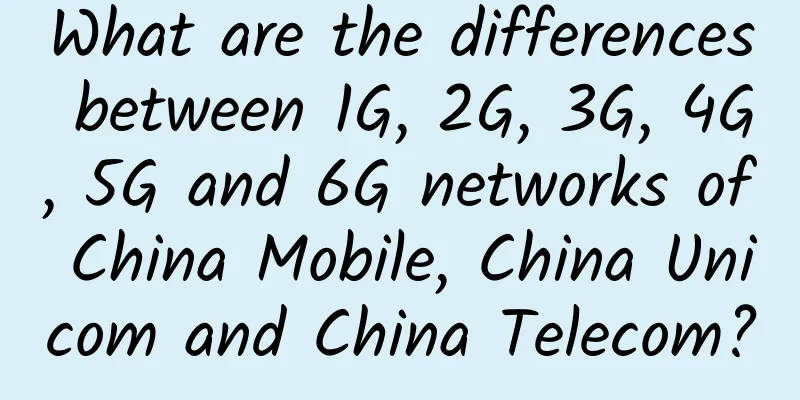5G edge computing is here, it will make supercomputers ubiquitous

|
AT&T was the first to propose the concept of "edge computing", the main purpose of which is to solve the problem of network delay in future 5G applications, such as driverless cars, robots, virtual reality/augmented reality (VR/AR), etc. The increasing popularity of the Internet of Things (IoT) and the Internet of Everything (IoE) is expected to bring edge computing into people's lives in the next few years. According to Cisco data, the number of devices connected to the Internet has increased from 500 million in 2003 to 12.5 billion in 2013, and it is expected that by 2020, this number will exceed 50 billion.
The number of IoT devices is growing rapidly The market value of the Internet of Everything will reach 19 trillion US dollars, forcing communication operators to rethink and redesign their network architecture. In the 5G edge computing era, data centers will cease to exist and become an outdated concept in technology. From data flow, bandwidth to network latency, in the near future, traditional data center-based computing will not be able to meet the needs of the Internet of Everything. The increase in the number of connected electronic products and the growth of big data will bring great pressure to data storage and processing capabilities, and the current data center model cannot provide support. New communication model Therefore, it is necessary to completely transform the network architecture, that is, to transform from a cloud-based system to a distributed edge network structure, or "edge computing". 5G will enable edge computing, and edge computing will become the core of the Internet of Things. Ericsson pointed out in its annual mobility report that by 2020, 5G mobile network users will account for 15% of the world's population, and 5G will connect everything from smart home appliances to smart city solutions. U.S. communication operators have keenly captured this opportunity and have increased their investment in 5G edge computing. Last year, AT&T, Ericsson, and Intel conducted the world's first professional 5G trial. Last month, the three companies conducted a second trial to test live pay TV programs over a 5G network, with a network speed of 1 gigabit per second! Edge computing AT&T said that once 5G edge computing is realized, it will bring us only "network latency in milliseconds", which makes real-time processing of big data possible. Instead of being in the cloud, data will be processed at the “edge” of the network (e.g., in countless offices and companies), which will reduce the pressure of data on network traffic, speed up data analysis processing, and reduce network latency. 5G edge computing will enable robots, self-driving cars, wearable devices, drones and other systems that are sensitive to network latency, such as VR/AR, to become a micro data center themselves. Soon, an era will come where supercomputers are everywhere. |
<<: Developing 5G communications requires testing first
Recommend
What traditional financial services can learn from emerging banks and fintech companies
The pandemic has exposed gaps in nearly every ind...
OlinkCloud: 10% off on all VPS on AS9929 line in Germany/San Jose, USA, starting from $4.5/month, 40% off on dedicated servers
OlinkCloud has released a new discount plan for V...
Wi-Fi CERTIFIED Vantage adds support for the latest Wi-Fi features
Recently, Wi-Fi Alliance launched new features fo...
KT is forced to use "Korean speed" to make Gigabit "run" on copper cables
Korea Telecom is using GIGA Wire 2.0 technology t...
Global Private 5G Network, Taking Enterprise to the Next Level!
A recent analysis by Frost & Sullivan shows t...
Wi-Fi Alliance launches next-generation WPA3 security certification program
[51CTO.com original article] On June 26, the Wi-F...
Technical details: Basic principles of IPSec VPN
IPSec VPN is a technology with a very high click ...
Chrome downloads are so annoying! Here's how to fix it
Chrome is the most popular web browser in the wor...
Uncovering the secrets of CDN user-driven product changes
Preface : OTT-TV and IPTV have become popular due...
IDC: Private LTE/5G Infrastructure Market to Reach $5.7 Billion in 2024
A new report from IDC predicts that global privat...
How 5G will reshape future smart home life
Home is where the heart is. The old adage conveys...
How to connect Pod in K8S cluster with local network for debugging
[[404039]] Preface As we all know, when there is ...
WiFi isn't that secure: Tips to protect your home network
Wireless routers have been attacked frequently re...
OneTechCloud VPS Hosting 20% off, US CN2 GIA/Hong Kong CN2/CMI large bandwidth/high defense optional
OneTechCloud (Yikeyun) launched this year's s...
H3C: Using Converged Network Technology to Support Digital Transformation of All-Scenario Services in Smart Hospitals
Hospitals are the core of protecting the health a...









